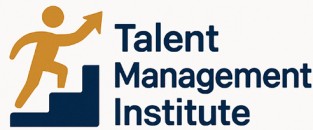
Understanding the Need for Time Tracking in Architecture
Recognizing the Importance of Time Management
For architectural firms, managing time efficiently is critical to ensuring the successful completion of projects. These businesses often juggle multiple projects at different stages of development. Effective time management helps in delivering work within deadlines without compromising quality. Especially for small firms, where resources might be limited, every hour accounted for is essential to the financial health of the business. Understanding the need for time tracking is the first step towards optimizing project management processes.Maximizing Efficiency in Architecture Projects
Architectural projects are intricate, demanding precise coordination among team members. In such settings, tracking time gives architects the data they need to assess productivity and allocate resources effectively. Having visibility into real time spent on tasks empowers firms to make informed business decisions. Complex designs and evolving customer needs can lead to changes in project scopes, and having an accurate time tracking system in place ensures that these adjustments are reflected in the billing and resource management.The Role of Time Tracking in Managing Architect Teams
Architects are often tasked with managing not just their workload, but also coordinating a broader team. By incorporating robust time tracking software, project management can be considerably streamlined. This technology assists small architecture firms in tracking team performance and identifying areas where support might be needed. The ability to break down tasks and track time encourages transparency and accountability, leading to better planning and more accurate estimations of future projects. These practices not only streamline internal processes but also enhance client satisfaction, as project timelines and expenses become more predictable. This level of detail ensures smaller A&E firms can remain competitive, offering professionalism and reliability. Exploring enhancing talent management with LMS can provide further insights into leveraging technology for better team coordination and productivity.Key Features of Effective Time Tracking Software
Essential Features to Propel Your Projects Forward
Architectural firms, both large and small, often juggle multiple projects simultaneously. This complexity underscores the importance of having robust time tracking software that not only keeps the team on track but also channels efficiency into every stage of a project.
When selecting a time tracking solution, firms should consider features that enhance precision and productivity:
- Real-time Tracking: This feature allows architects to track time as they work, reducing the risk of overlooking billable hours. It provides immediate visibility into the progress of projects, proving invaluable for project management.
- Integration Capabilities: Seamless integration with existing project management and accounting software ensures that time tracking doesn't become an isolated tool but a strategic component of the entire business process.
- Customizable Pricing Plans: For small firms and A&E businesses, the ability to choose between different pricing plans based on size and requirements can lead to cost-effective implementation.
- Comprehensive Reporting: Effective time tracking software offers detailed reports that help management better understand time expense and identify bottlenecks, enhancing overall time visibility.
Opting for the best practice solutions may indeed uncover hidden potentials in your architectural projects, and help unleash your firm's goals. To explore how visionary firms unlock their potential, consider visiting here for additional insight.
Enhancing Talent Management with Time Tracking Tools
Integrating Time Tracking for Enhanced Talent Management
In the competitive world of architecture, managing talent effectively is crucial for success. Time tracking software plays a pivotal role in this process by offering real-time insights into how teams allocate their hours across various projects. This visibility not only aids in optimizing project management but also enhances the overall efficiency of architectural firms.
One of the key advantages of using time tracking tools is the ability to track time spent on different tasks, which helps in identifying areas where team members excel or need further development. This data-driven approach allows firms to tailor professional development programs and allocate resources more effectively.
Streamlining Project Management and Team Collaboration
Time tracking solutions like Deltek offer comprehensive features that support small businesses and large architecture firms alike. By providing detailed reports on billable hours and project timelines, these tools enable firms to manage projects more efficiently. This not only improves project delivery but also fosters better collaboration among team members.
Moreover, integrating time tracking with accounting software can streamline the billing process, ensuring that all billable hours are accurately recorded and invoiced. This integration is particularly beneficial for A&E firms, where precise accounting is essential for maintaining profitability.
Best Practices for Implementing Time Tracking Solutions
To maximize the benefits of time tracking software, firms should adopt best practices such as setting clear expectations for time tracking, providing training for team members, and regularly reviewing time data to make informed decisions. By doing so, architecture firms can enhance their talent management strategies and drive business growth.
Overcoming Common Challenges in Implementation
Addressing Resistance to Change
One of the most common challenges in implementing time tracking software in architectural firms is resistance to change. Architects and project managers may be accustomed to traditional methods of tracking time and managing projects, making them hesitant to adopt new tools. To overcome this, it's crucial to communicate the benefits of the software clearly. Highlight how it can streamline project management, improve time visibility, and enhance overall efficiency.
Ensuring Data Accuracy
Another challenge is ensuring the accuracy of the data collected. Inaccurate time tracking can lead to billing discrepancies and affect project profitability. Firms should establish best practices for tracking time, such as regular updates and reviews of time entries. Training sessions can help team members understand the importance of precise data entry and how it impacts the business.
Integration with Existing Systems
Integrating new time tracking solutions with existing accounting software and project management tools can be complex. It's essential to choose a tracking solution that offers seamless integration capabilities. Deltek, for example, provides robust integration options that can help architecture firms manage projects more efficiently. Ensure that the chosen software is compatible with your current systems to avoid disruptions.
Managing Costs and Pricing Plans
For small businesses and A&E firms, managing the costs associated with new software can be a concern. It's important to explore different pricing plans and find a solution that fits your budget. Some software architects offer free trials or tiered pricing, allowing firms to test the software before committing financially. Consider the long-term benefits and potential for increased billable hours when evaluating the cost.
Training and Support
Finally, providing adequate training and support is crucial for successful implementation. Ensure that your team is well-versed in using the new tools and understands how to track time effectively. Many software providers offer training resources and customer support to assist with the transition. Investing in training can lead to smoother adoption and better utilization of the software's features.
Case Studies: Success Stories from Architectural Firms
Real-life Success: Architectural Firms Benefiting from Time Tracking
The implementation of time tracking software has marked significant milestones for many architecture firms, from small businesses to larger A&E firms. Through strategic deployment of time tracking tools, these firms have seen a remarkable transformation in managing projects effectively while enhancing productivity and monitoring billable hours. Here, we delve into some compelling success stories that demonstrate the tangible benefits of integrating time tracking solutions into architecture project management. One notable A&E firm opted for Deltek, a renowned time tracking and project management software, which allowed them to gain real-time insights into project progress. This implementation led to a clear understanding of time expense and allocations across various projects, thereby maximizing team efficiency. The firm reported a 30% increase in project completion rates within deadlines, attributed to their ability to meticulously track time spent on each task. The transparency offered by the software encouraged better planning and workload distribution, which minimized project delays and overruns. For smaller architecture firms, free and reasonably priced tracking solutions have enabled them to compete effectively in the market. An emerging architectural boutique turned to a basic time tracking tool, which provided just the right amount of oversight needed for their team. The simple but efficient software was crucial in tracking billable hours accurately, which is critical for small businesses tight on budget and resources. By managing projects with enhanced time visibility, the firm's management could make informed decisions, which led to improved client satisfaction and more profitable business operations. These success stories underscore the importance of selecting the right tracking software tailored to the needs of the firm. Whether through sophisticated systems like Deltek or simpler solutions, the key lies in optimizing usage according to specific business goals. As more firms adopt these practices, the landscape of architecture is set for a transformation towards more efficient and successful project management.Future Trends in Time Tracking for Architects
Glimpsing the Future: Evolving Trends in Time Tracking for Architectural Practices
In the ever-evolving landscape of architecture, where precision and innovation must coexist, keeping up with technological advancements is key. The future of time tracking software in architectural firms holds promise, continuously shaping how projects, time, and teams are managed.- Integration with Project Management Suites: As architectural firms increasingly rely on comprehensive project management solutions, seamless integration with time tracking tools is essential. This connection ensures real-time visibility into project progress, facilitating better team collaboration and optimized management of billable hours.
- AI and Automation: Automation is no longer a concept of the future, but a growing reality. AI-driven solutions can predict project timelines, suggest shifts in resource allocation, and streamline time management processes, reducing non-billable hours and enhancing efficiency.
- Enhanced User Experience: As architects are often involved in complex projects, user-friendly interfaces and intuitive designs in tracking software become priorities. This enhances user engagement and simplifies the process of tracking time and expenses, especially for small firms where every minute counts.
- Adaptive Pricing Models: Adaptive pricing plans aim to offer time tracking solutions that suit firms of all sizes, from small businesses to large A&E firms. This flexibility allows companies to scale their software commitments with their growth, providing accessible solutions at various pricing tiers.
- Data-Driven Insights: Advanced analytics capabilities within time tracking systems enable architecture firms to derive actionable insights from time data. This fosters better decision-making and helps in strategizing future projects based on past performance and current resources.












